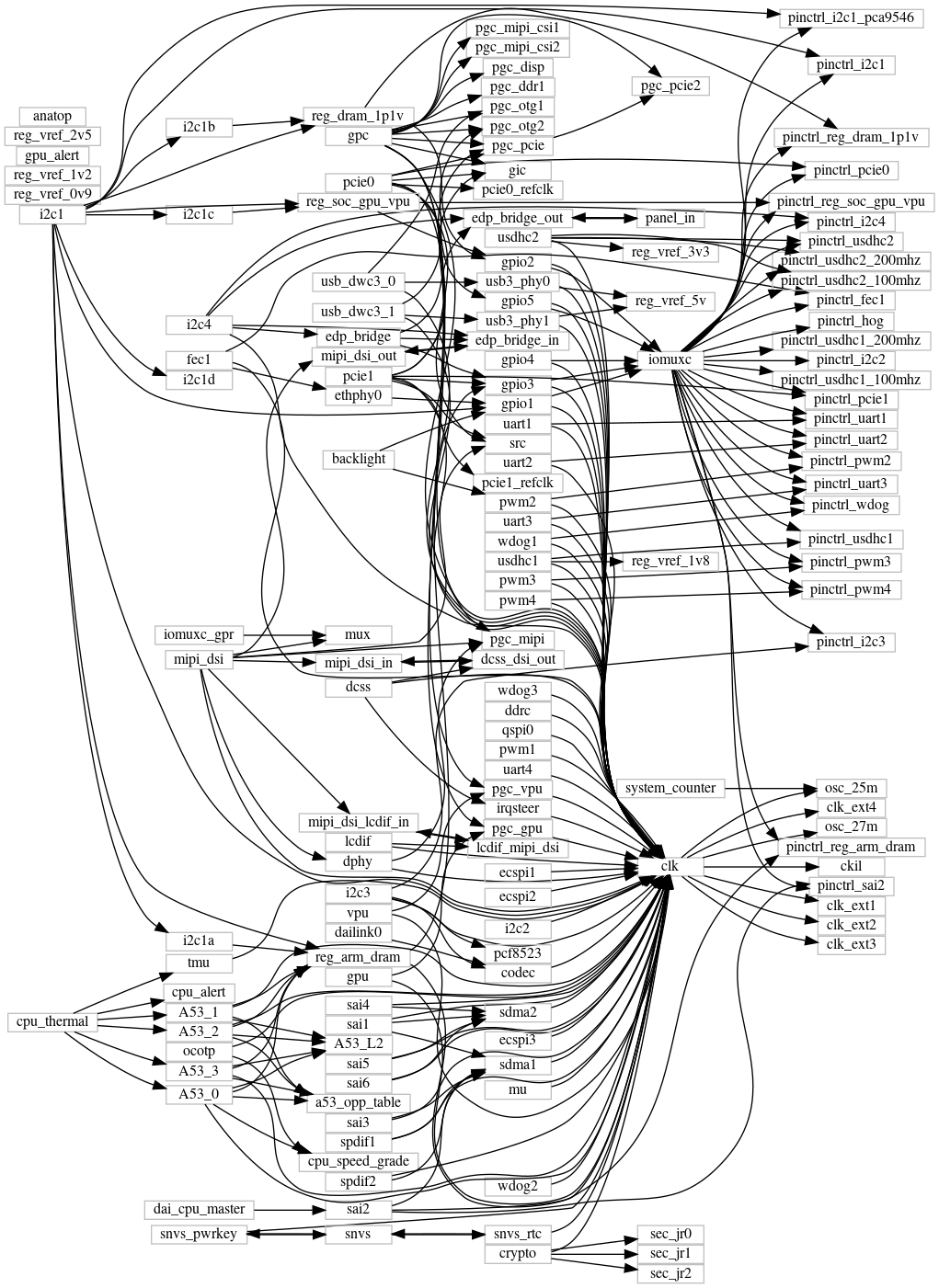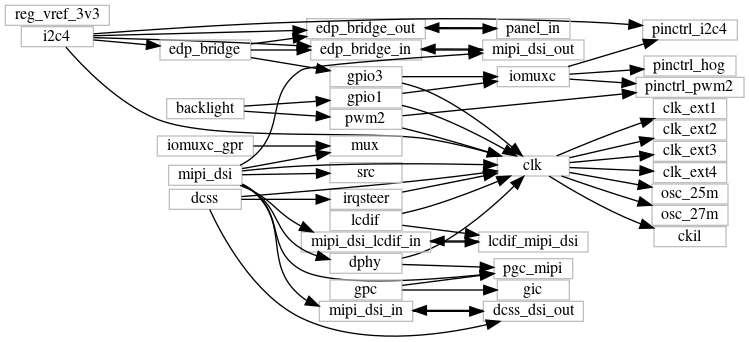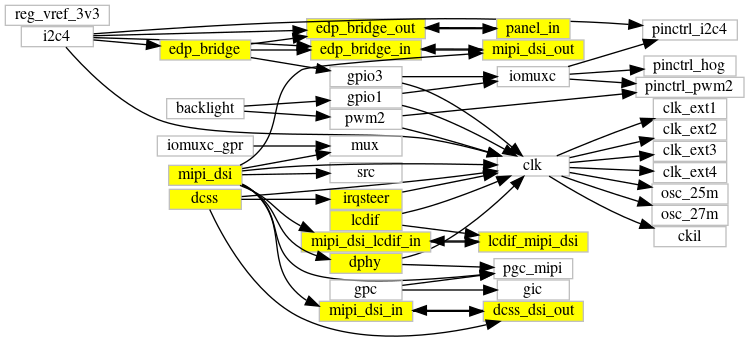Linux device driver ports - Choose compilation units
In my first blog post of this series, I've described the motivation to break new grounds in porting Linux drivers to Genode. Moreover, you've seen how to re-use the headers and configuration of a pre-built Linux kernel. In the last blog post, we continued our journey with a new helper tool to generate missing Linux kernel function definitions automatically. This time I'll continue with how to choose the absolutely necessary compilation units for a given driver resp. subsystem.
The example showcased in the following is less than trivial. We want to enable the display of the MNT Reform 2. The whole device-tree of this system as provided in its Linux kernel fork, looks like the following:

|
By studying the device tree, the reference manual of the i.MX8 MQ SoC and the MNT Reform2 book in more detail, I've identified some critical components involved in the display system, but most prominent the Display Controller Subsystem (DCSS). By using the device-tree extraction tool with the DCSS as extraction target, you can easily strip down the device tree to a minimum necessary to enable the display, like you can see in the figure below.

|
There are still a lot of devices left that we do not want to control via the framebuffer driver port. For instance reset-pins, power domains, and clocks that are controlled by the platform driver for i.MX 8MQ already. The Generic Interrupt Controller (gic) that is under control of the kernel itself is another example. Moreover, we already have protocol APIs for I2C and GPIO and drivers for this platform within the Genode framework. Therefore, we want to drive these devices, which typically offer resources to different other peripherals as well, separatly. The remaining device nodes from the original device tree is the set we want to drive with the sighted Linux Kernel port. They are marked yellow in the below figure.

|
Now, its time to open the stripped down device tree source file, and look at those nodes in more detail. To identify the compilation unit equivalents of a single device node, we have to especially look for compatible properties in those nodes. In the following I list all collected compatible strings of the formerly identified device nodes:
compatible = "fsl,imx8mq-lcdif", "fsl,imx28-lcdif"; compatible = "fsl,imx8m-irqsteer", "fsl,imx-irqsteer"; compatible = "fsl,imx8mq-nwl-dsi"; compatible = "fsl,imx8mq-mipi-dphy"; compatible = "nxp,imx8mq-dcss"; compatible = "ti,sn65dsi86"; compatible = "innolux,n125hce-gn1", "simple-panel";
Now, you can use grep to find the corresponding source files, e.g. like so:
grep -r "fsl,imx8mq-lcdif" linux-source-path/drivers # delivered no hit grep -r "fsl,imx28-lcdif" linux-source-path/drivers # then try the second one
After looking up all different compatible strings, I've identified the following source files:
drivers/gpu/drm/mxsfb/mxsfb_drv.c drivers/irqchip/irq-imx-irqsteer.c drivers/gpu/drm/bridge/nwl-dsi.c drivers/phy/freescale/phy-fsl-imx8-mipi-dphy.c drivers/gpu/drm/imx/dcss/dcss-drv.c drivers/gpu/drm/bridge/ti-sn65dsi86.c drivers/gpu/drm/panel/panel-simple.c
This is the absolute minimum of sources needed, and the starting point to be used in conjuction with the create_dummies utility introduced in the last blog post.
By looking at the undefined missing references when using create_dummies show, you might identify further interesting compilation units useful to re-use instead of emulating it on your own.
One further hint. Sometimes it is useful to re-use whole subsystems in the first place to have results at hand in a short time. e.g., everything under drivers/gpu/drm/imx/ in our example. In those cases, please verify that all sources you select, are used in the original configuration as well. To ensure it, I've typically collected all object files of a directory with a wildcard rule in the makefile of the target, and turned the results into C-file compilation targets, like:
OBJECTS = $(wildcard $(LX_CONTRIB_DIR)/drivers/gpu/drm/imx/*.o) SRC_C += $(OBJECTS:%.o=%.c)


 Stefan Kalkowski
Stefan Kalkowski